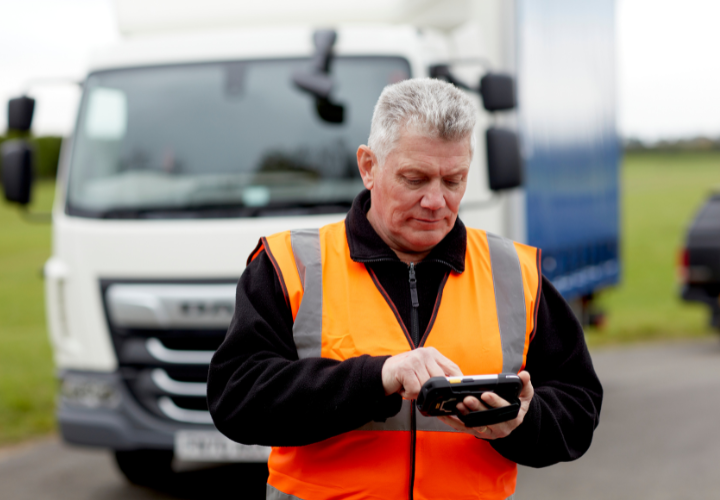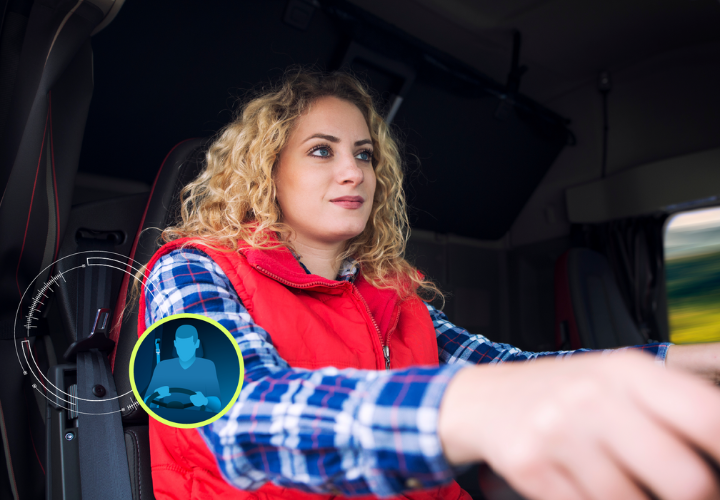This year’s Microlise Transport Conference provided a showcase for the industry as a whole
Several hundred users and potential users of telematics and fleet management systems gathered this year at the Microlise Transport Conference, which has become a significant event in the telematics calendar.
Although the fleet operators who spoke were all using Microlise systems, what they said often had generic interest that could apply equally to many of the leading systems.
Driver performance monitoring ranked high on the agenda, and was mentioned by almost all operators, but other operational benefits also came out in many of the presentations.
Fuel consumption had fallen by 4.8 percent – ‘better than the target’
The business case for adopting a telematics system had been simple enough, said Mark Faulkner, supply chain modelling manager for brewer Carlsberg. THe aim was to reduce fuel consumption by 4.6 percent and labour costs by 10.5 percent. In fact, he said, there was evidence that fuel savings of up to 13 percent were possible, but he was keen to set a real-world figure that could be achieved in practice.
Carlsberg’s UK fleet of 320 vehicles ranged in age from new to ten years old, and clocked up 15 million kilometres a year.
Interestingly, the company already used the Microlise warehouse management system, so it knew the supplier from long experience. It adopted the MTU3 on-board unit and CANbus integration, but not the driver module offered by Microlise. “In retrospect we would have liked it,” Faulkner added.
Although driver performance was not the only area of interest, a lot of attention was given to this. Geofencing have proved very effective in monitoring route adherence and checking that the company’s scheduling system was generating appropriate routes. Monitoring engine idling time had resulted in a big reduction.
In terms of driver acceptance, Faulkner admitted that tracking was seen initially as a “big brother” issue. “Perhaps we could have handled this aspect better,” he said. But he added that drivers now saw the system as a normal feature of the operation – a situation helped by a scheme to reward the best-performing driver each month with a £100 prize.
In practice it had been difficult to quantify reductions in labour cost, Faulkner said, but fuel consumption had fallen by 4.8 percent – better than target – and the value had been rising along with fuel prices. In the year 2010 to 2011, the company had saved 200,000 litres of fuel. “Payback was just two years,” he said.
‘It is important not to focus on mpg, but on driving style’
The impact of Microlise telematics on Scottish-based John Mitchell Haulage & Warehousing had been “phenomenal”, said managing director Iain Mitchell. He recounted how the company had first explored telematics eight years ago. The company had a poor experience with an earlier system from another supplier, he said. Then truck maker MAN recommended Microlise.
“It was more efficient, and provided better driver control,” he said. He admitted it was potentially a hard sell to drivers, “but they did buy into it.”
It immediately started revealing potential for savings in the 115-vehicle fleet, he said. He described a situation where there were two possible routes drivers could take to join the southbound M74. There ws a difference of three miles between them, and suddenly it was possible to tell which route drivers were taking. “That change alone saved us a fortune.”
A key improvement had been in communications and the traceability of messaging, and the greatest beneficiary had been customer service. “In the past, drivers often told the traffic office what they wanted to hear. Now we can provide accurate information. It’s been a huge sales tool.”
Driver performance was also a key issue, Mitchell said. Drivers could now be rated on an A to G scale, and those with D to G ratings were assessed and given extra training. The poorest performers could eventually be asked to leave, but the best were rewarded every month with £150 (A grade) and £50 (B grade).
He recounted how one driver insisted he could not improve his performance, but Mitchell revealed how avoiding the use of cruise control had improved his fuel consumption from 6.1 to 7.6mpg. “He’s now consistently an A or B grade on most days.”
“It is important not to focus on mpg, but on driving style,” he said. “Then savings in mpg come naturally.”
‘Management by exception is the key’
Even on an operation that has involved the same drivers for many years, it is possible to improve driving style by installing a suitable telematics system, with resultant savings.
That was the message from Kevin Allen, contract manager at Ryder. He described how Microlise telematics had been implemented on a long-standing home delivery contract with Sharps Bedrooms, where it was important to be able to tell householders exactly when to expect their delivery.
The company had integrated the Microlise system with the Ortec routing and scheduling suite, and had included MDT driver terminals in the package, along with electronic proof of delivery.
A useful feature of the implementation had been the use of an electronic whiteboard giving traffic planners an instant live map view of vehicle locations, with constantly updated ETAs. “Now we can send SMS texts showing the expected arrival times,” Allen said.
The MDT terminals featured pre-scripted driver routines, directed sat-nav, delivery information and provision to photograph damaged goods.
A large amount of data was gathered from vehicles, Allen said, including instances of harsh braking. “Management by exception is key,” he advised.
‘Now we can avoid tarring every driver with the same brush’
Mark Binns, managing director of chemical logistics company Hoyer, said 75 percent of the goods carried by his company were hazardous, so its priorities were safety, then cost, then customer service.
He said the company used the Smiths defensive driver training system (a three-week course) to ensure that drivers were able to perform perfectly – “but they won’t necessarily be perfect all the time.” However, he said technology could help monitor and improve performance.
Hoyer used a “red, amber, green” system to rate drivers, and this provided the structure and evidence, Binns said. “Previously we applied blanket training, which could be expensive and wasteful. Now we can avoid tarring every driver with the same brush, and provide targeted training instead.” Points were allocated to events such as harsh braking, and near misses, and a detailed summary was created.
As an indicator of the overall improvements achieved, he said lost deliveries had been reduced from 0.7 percent in 2009 to 0.4 percent in 2011.
Achieving the objective of exonerating drivers in disputed incidents
Chartered safety practitioner Simon Wilson described how DHL Supply Chain had embarked on what he termed “a safety maturity journey”, which aimed to reduce the accident rate over its 350 UK locations from two or three accidents per million kilometres to one. It had been using the Smiths training programme, but this had proved “hugely expensive”.
A key requirement had been to find a telematics system that captured contextual speeding information. “Most systems don’t do this,” he said, adding that the Microlise system was one that did.
The company had also explored the use of forward-facing cameras (another feature now supported by Microlise). It had been “a huge decision” to fit them, but they did achieve the objective of exonerating drivers in disputed incidents.
Harsh cornering was another feature that DHL regarded as important. He was particularly attracted to the system’s ability to convert GPS reading at quarter-second increments into lateral g-force without the need for an accelerometer.
Improvement in morale
When telematics was introduced in Tesco’s 3000-strong fleet of home delivery vans, there was an improvement in morale among the 9000-plus customer delivery assistants (the drivers), plus an instant reduction in vehicle damage. These were among gains cited by fleet training manager Cliff Cheeseman.
The company did its training in-house, he said, and had taken this as its starting point. With telematics, he said, Tesco knew vehicle locations and distances travelled, which helped reduce fuel consumption, and monitoring harsh braking and over-revving had brought safer driving and a reduction in costs.
There had also been a reduction in insurance claims. “No vehicles are stolen now, because drivers never leave their keys in the ignition.”
There had been operational as well as fleet management benefits, Cheeseman said. Telematics had underpinned the company’s text messaging process, and its ability to offer consumers narrow delivery time windows.
Featured in Issue 57 Septemer / October 2012 – mlogistics magazine



